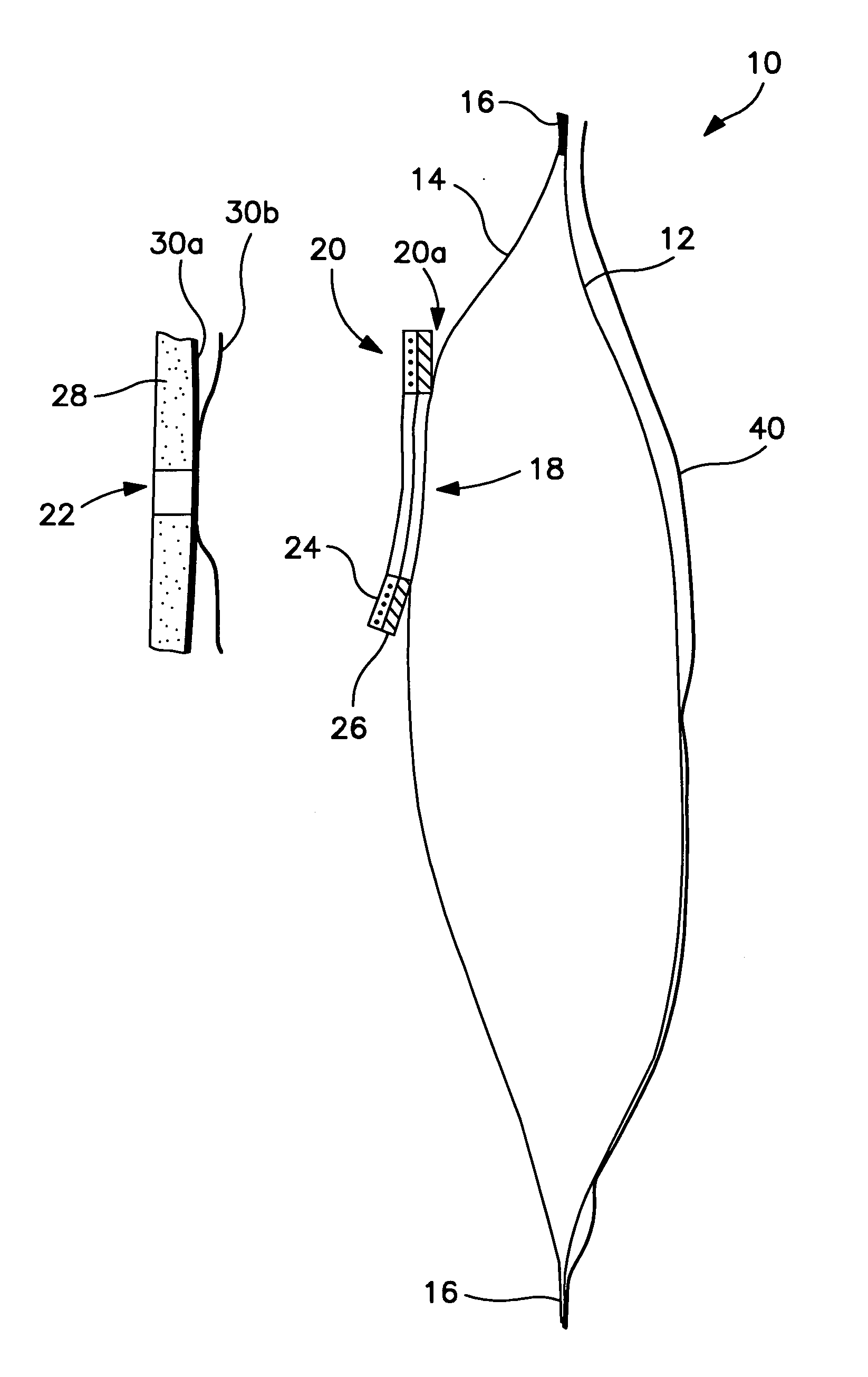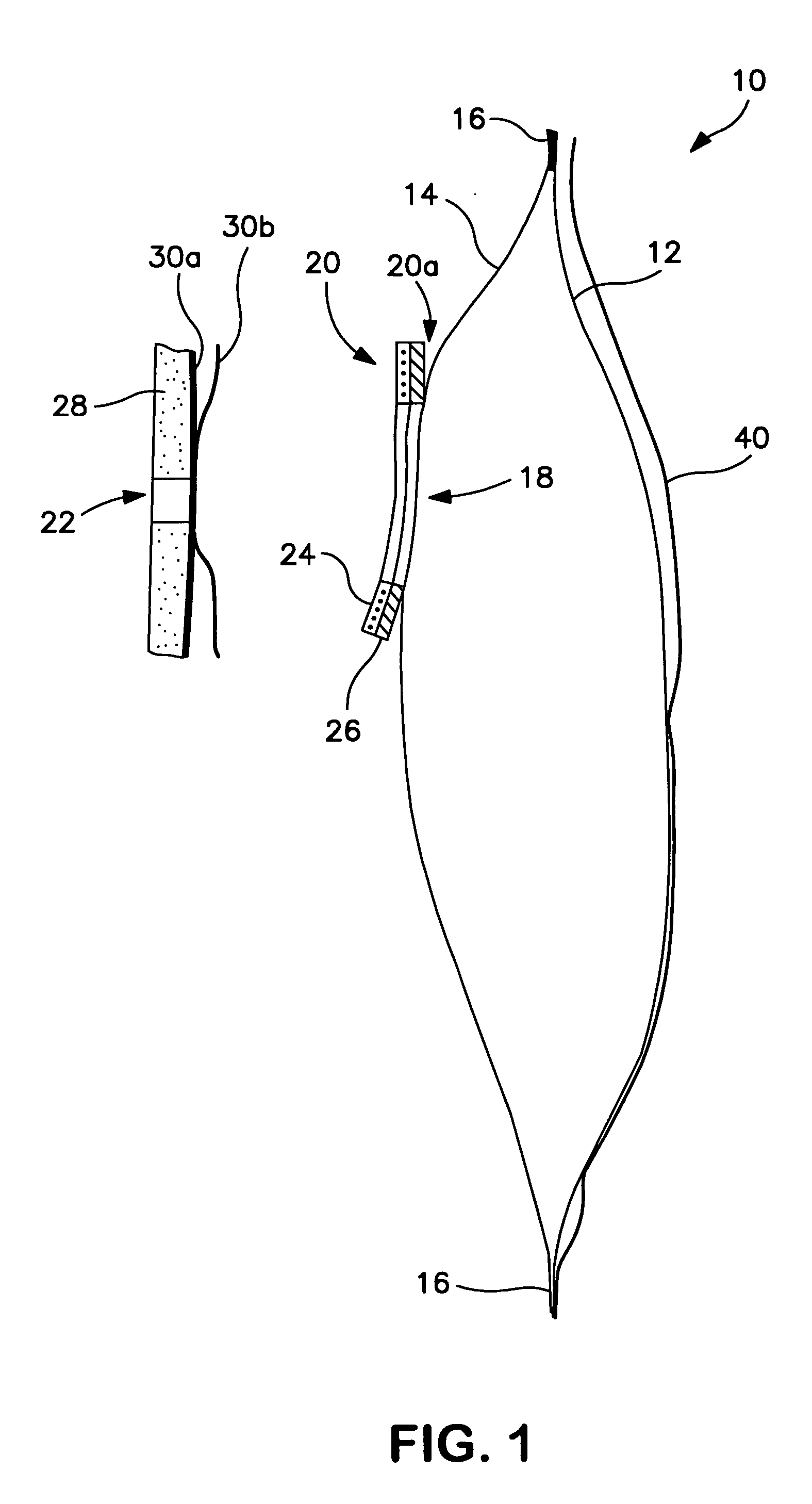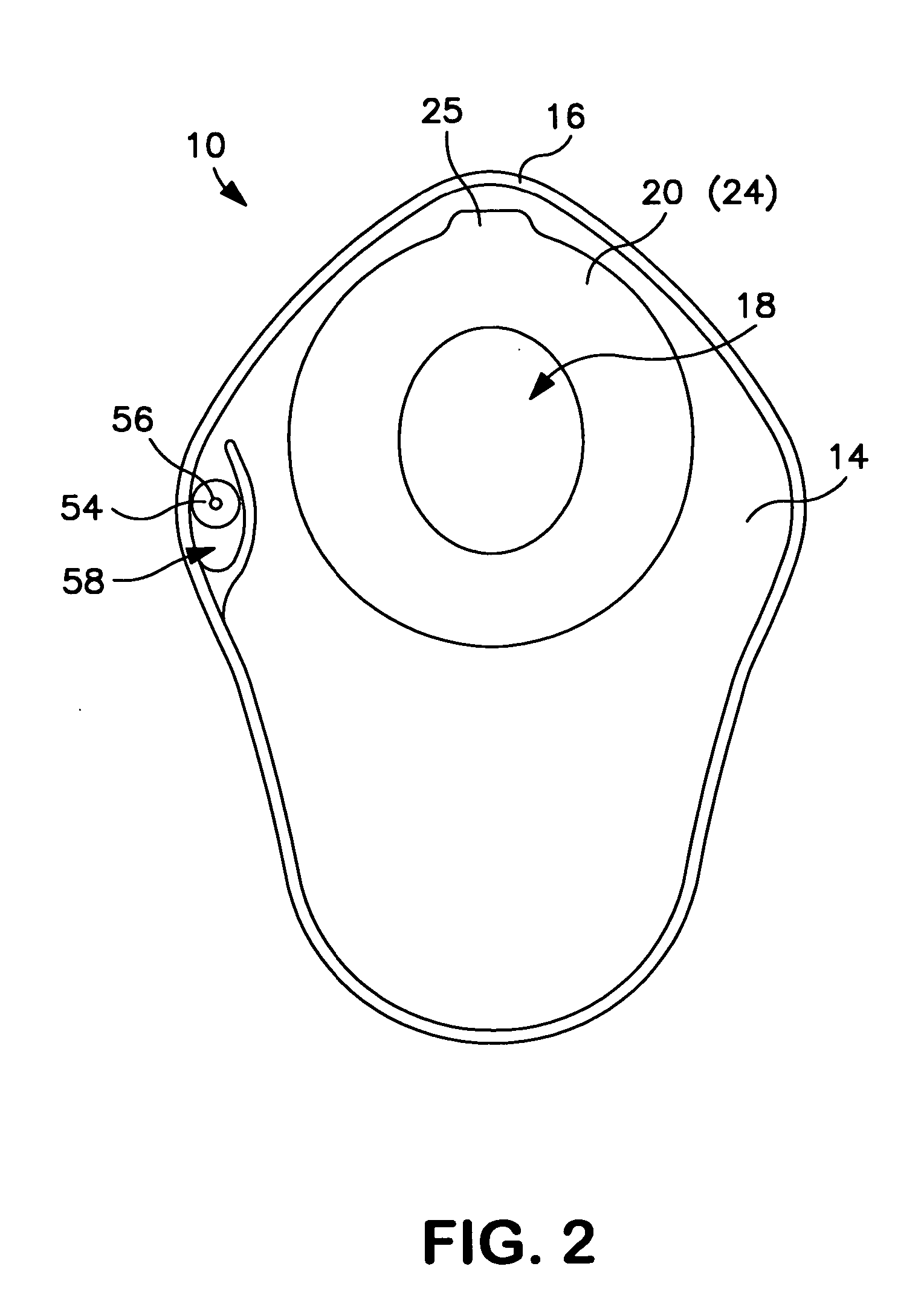Pouch for medical use
a technology for medical use and pouches, applied in medical science, non-surgical orthopedic devices, colostomy, etc., can solve the problems of difficult to achieve the desired flushability, inability to flush easily, and hydrocolloid polymers are not very water soluble, so as to facilitate flushing
- Summary
- Abstract
- Description
- Claims
- Application Information
AI Technical Summary
Benefits of technology
Problems solved by technology
Method used
Image
Examples
Embodiment Construction
[0041]FIGS. 1-5 may illustrate a first embodiment of the invention in the form of a medical pouch 10. The pouch 10 may be a collection pouch, for example, an ostomy pouch.
[0042] The pouch 10 may generally comprise a front wall 12 and a rear wall 14 joined by a plastics weld 16. The front wall 12 and / or the rear wall 14 may comprise a material that is biodegradable and / or water soluble and / or water dispersible. Suitable materials include, by way of example only, polycaprolactone, polylactic acid (PLA), aliphatic polyester (e.g., Estar Bio made by Eastman, Ecoflex made by BASF, Biomax made by du Pont), copolymers of 3-hydroxybutyrate (e.g., PHBV made by Monsanto), and poly(hydroxyalkonates)homopolymers and copolymers (e.g., Nodax made by Proctor and Gamble), starch based polymers (e.g., Materbi made by Novamont), poly(vinyl alcohol) based polymers, alkaline soluble polymers (e.g., acrylic acid copolymers made by Belland), etc.
[0043] The front and / or rear walls 12 and 14 may further ...
PUM
 Login to View More
Login to View More Abstract
Description
Claims
Application Information
 Login to View More
Login to View More - R&D
- Intellectual Property
- Life Sciences
- Materials
- Tech Scout
- Unparalleled Data Quality
- Higher Quality Content
- 60% Fewer Hallucinations
Browse by: Latest US Patents, China's latest patents, Technical Efficacy Thesaurus, Application Domain, Technology Topic, Popular Technical Reports.
© 2025 PatSnap. All rights reserved.Legal|Privacy policy|Modern Slavery Act Transparency Statement|Sitemap|About US| Contact US: help@patsnap.com



